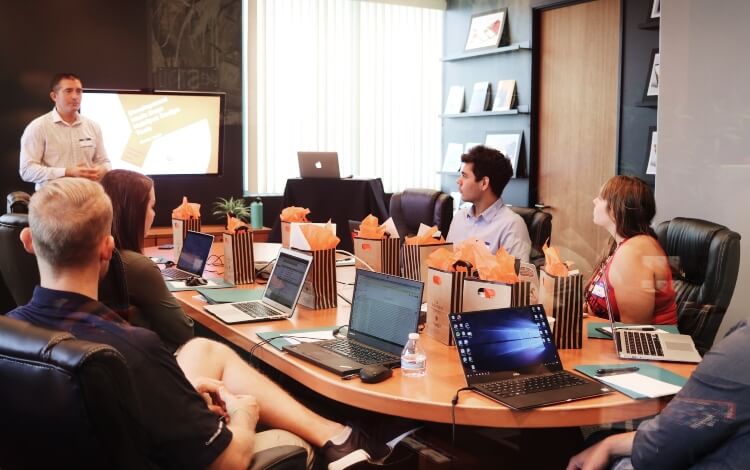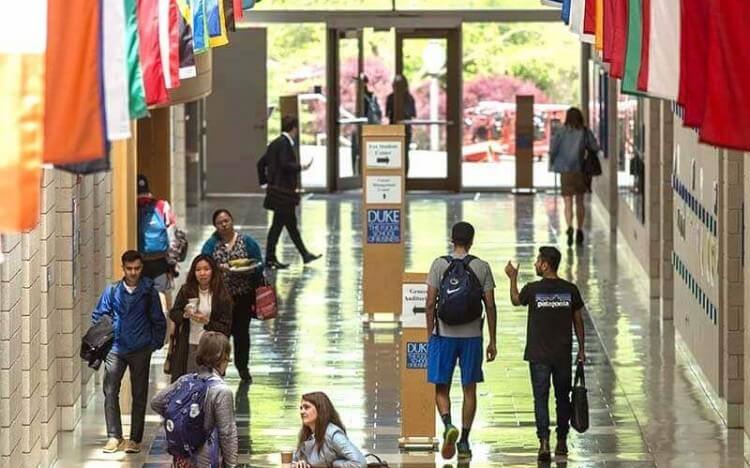The H-1B visa allows you to stay in the US to work after business school, and with Trump's H-1B visa ban lifting under the Biden administration, it's good news for international grads.
H-1B visa rules favor MBA and business master’s graduates too, who are able to enter the annual H-1B lottery twice, first with their bachelor’s degree and then with their MBA or master’s degree.
However, there's no guarantee you'll be awarded a visa. It’s estimated that around 30% of applicants get their visas: there were 275,000 H-1B applications in 2020 and the annual cap stands at 85,000.
But the H-1B visa isn't the only way for you to stay and work in the US after business school if you're an international grad.
Here are four H-1B visa alternatives that could help you secure US work authorization.
1. STEM OPT (Optional Practical Training)

© by Trust "Tru" Katsande via Unsplash
One alternative to the H-1B is taking a STEM-designated MBA course.
This designation is achieved by a program when over 50% of its content is focused on ‘STEM’ subjects—science, technology, engineering, or math.
Achieving a STEM MBA extends the amount of time overseas students can work in the US on the Optional Practical Training (OPT) program from one to three years—but only if they are hired into a STEM role.
The University of Rochester’s Simon Business School has STEM designation for its MBA program. Rebekah Lewin, assistant dean of admissions and financial aid, says the OPT extension provides a student with three chances of winning the annual H-1B lottery.
“This reduces risk for international students and the employers hiring them,” she says.
She adds that close to 90% of the school’s overseas MBA candidates usually secure a role within the US after graduation.
2. The L-1 visa
Many US companies have global operations, so one option for migrants is to be employed in another location outside the US, but return under an L-1 visa.
There are two L-1 visa options for migrants entering the US to work. The L-1A visa is for managers and executives who are either transferring to a US office, or entering the US for the purposes of setting up a company's US office. The L-1B visa is for specialized employees who have essential specialist skills or knowledge.
An employee can only be granted an L-1 visa if they have worked for the company's non-US office for a continuous 12-month period within the previous three years.
Employees on L-1A visas can stay in the US for a maximum of seven years, after extensions. L-1B visas have a maximum extension period of five years.
One plus is that unlike the H-1B visa, there’s no annual cap on the number of L-1 visas granted.
3. The O-1 visa

© Campaign Creators via Unsplash
Another alternative is the O-1 visa. This is for foreign workers with extraordinary abilities in business, sciences, arts, education, athletics or media, and it lasts for up to three years.
There is no cap on O-1 visas, and they can be applied for year-round, unlike the H-1B scheme which has an application deadline.
You don’t need to win the Nobel Prize or an Oscar to get an O-1 visa, which makes it a valid option for business school graduates with impressive achievements. The number of O-1 visas issued tripled between 2006 and 2016, from 30,000 to nearly 100,000.
The concern, however, is that applicants for O-1 visas may exaggerate their abilities and accomplishments to get US work authorization. If they're found guilty of fraud, candidates could be barred from applying for any US visas in the future.
4. Have a plan B
US admissions consultant Stacy Blackman says that her clients are increasingly seeking jobs in sectors that are more likely than others to take a gamble on an overseas graduate, such as consulting.
“They are heavily recruiting for consulting, so [graduates] can try to gain additional time in the US while also building knowledge of the US market,” says Stacy.
However, turning towards consulting doesn't guarantee obtaining a visa. For an H-1B visa, employers must hire a candidate and file an application on their behalf. There's also the luck of the draw of the H-1B visa lottery.
But another asset that makes consulting attractive to foreign grads is that the big consulting firms such as McKinsey or Bain have offices all around the world. This provides a back-up option if the H-1B application falls through. “It’s important to have a plan B,” Stacy says.
Read: H1B Visa Changes Give Priority To MBA And Master’s Students
©Duke Fuqua Facebook
Ultimately, visa workarounds involve a lot of red tape and effort, but they can pay off.
Though Marcelo Barros, a careers expert for overseas students, says that securing work authorization can be difficult, and depends on your perseverance and ability to prove your unique value to prospective employers, he adds that “thousands of international MBAs secure jobs in the US every year.”
Rebekah at the Simon School also remains positive about the opportunities for international grads in the US.
“International students can take advantage of a strong US economy where many global companies are eager to hire the best and brightest students,” she says. “We are very optimistic about the outlook.”
* Images in this article are used under this license
This article was updated on August 6th 2021




